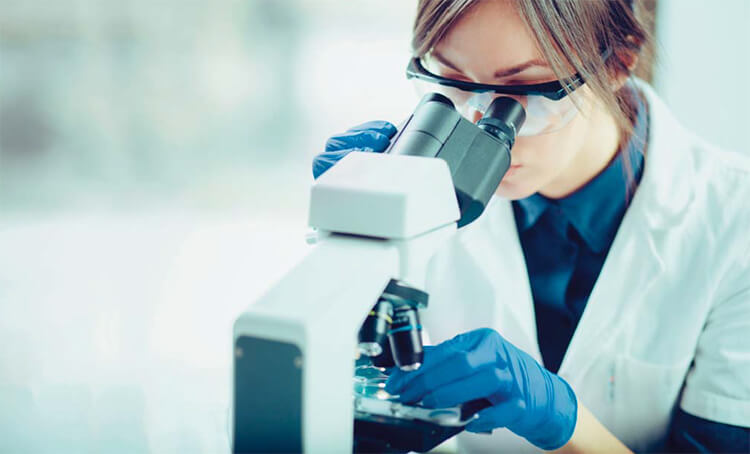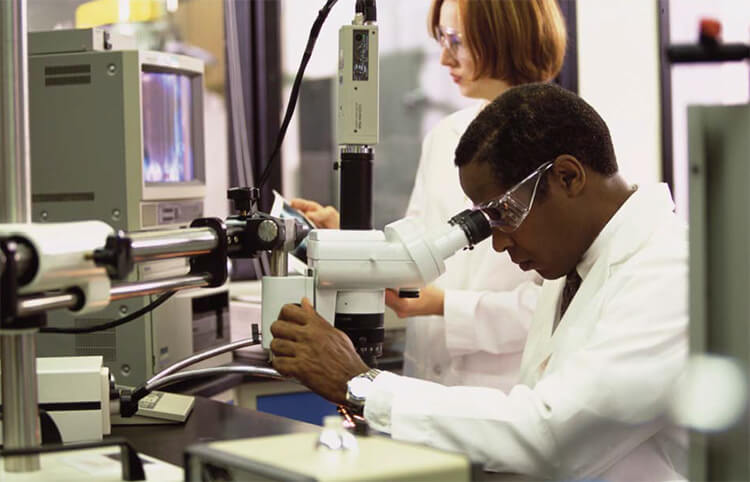Frost & Sullivan recently invited academic and industry leaders in neuroscience research to participate in a unique thought leadership forum, our Virtual Think Tank series, titled Biomarkers for the Brain. This forum brought together leading minds involved in the study of biomarkers of central nervous system (CNS) diseases and disorders. The Virtual Think Tank stirred discussion about technological advancements in the field, current progress, future implications of the research and development occurring today, plus unmet needs in tools, key challenges that still remain, and expectations for future usage of biomarkers in CNS diseases.

Introduction
A biomarker, or biological marker, is a term used to describe any measurable biological indicator or characteristic that can reflect a physiological state, such as a protein, cell, gene, hormone, or other type of molecule. The study and use of biomarkers in medicine is nothing new. Some biomarkers are straightforward and can give a definitive yes or no answer in a wide time range. Other biomarkers are difficult to detect given the minute amount of the markers present, their fleeting presence, or their occurrence in a location that is challenging to access. This means that even when a clinically relevant biomarker has been discovered, it does not necessarily translate to a viable diagnostic test or therapy.
When thinking about biomarkers, most would associate them with diagnostic tests to predict, diagnose, or provide a prognosis for a particular disease. However, biomarkers are now being utilized in drug development and regulatory decision making as they have the potential to improve the efficiency of the drug discovery and development process. In particular, if specific biomarkers that monitor or reflect the status of a disease can be identified, then researchers can use the expressed changes in these biomarkers to better understand how effective a new therapy is against a particular disease. Known as surrogate markers, they are tested to measure the effects of a specific treatment on disease status or progression. Including that data in a clinical trial would allow researchers to focus their efforts and resources on therapies that prove to be the most effective. In addition, pharmaceutical companies are using biomarkers to stratify patients, allowing them to move forward with the patients most likely to benefit from the drug being tested. These methods provide a greater chance of clinical trial success and regulatory approval. Ultimately, the use of biomarkers in the drug development process can reduce the time and cost of bringing new drugs to market, an ongoing goal of the pharmaceutical industry. Most importantly, biomarkers can provide clinicians with critical information to make better diagnoses and treatment plans, leading to better patient outcomes.
The Need for Biomarkers for CNS Diseases

Some diseases have well characterized biomarkers already incorporated into diagnostic tests and therapeutic decision making. Well known biomarkers in oncology include human epidermal growth factor receptor 2 (HER2) and estrogen receptor/progesterone receptor (ER/PR) for breast cancer, and carcinoembryonic antigen (CEA) as a prognostic biomarker for colorectal cancer. Meanwhile, other research areas and diseases are lagging in biomarker discoveries. Dr. Ronald Hayes, Founder and Chief Science Officer at Banyan Biomarkers stated, “CNS biomarkers are very late to the game compared to the use of biomarkers in other areas, especially oncology and cardiology.”
The experts joining our Virtual Think Tank were asked which CNS diseases and disorders would most benefit from biomarker discovery. It became evident that this question could be approached from several different angles. Certainly, common diseases with the greatest socioeconomic impact could be considered, or those that are most aggressive, debilitating, or fatal. Furthermore, from the scientific perspective, the industry might consider those diseases that are most difficult to diagnose or that require improved diagnostic tests in terms of specificity, sensitivity, early detection, or ability to stage disease progression. Additionally, with an aging population and rising healthcare costs, finding biomarkers to better diagnose, monitor, and treat diseases rising in incidence is more important than ever.
Factors such as the medical need and the challenges involved were also discussed by the experts. Dr. Adam Fleisher, Chief Medical Officer at Avid Radiopharmaceuticals elaborated, “Some [biomarker discovery] will be in genetic or orphan diseases that could dramatically benefit from having biomarkers, but would have a smaller impact in terms of need. Whereas with biomarkers for more common diseases in neuroscience, like neurodegenerative disease, Parkinson’s disease, TBI, and Alzheimer’s disease, there’s more of a need but there are also more challenges in the biomarker discovery.” The experts convened are conducting biomarker research or developing technologies for such work across a wide range of CNS diseases and disorders. This demonstrates the critical need for biomarkers across many neurological ailments ranging from Alzheimer’s disease to Parkinson’s disease to TBIs such as concussions.
One disease discussed extensively by the experts, Alzheimer’s disease, meets several of the criteria driving the need for biomarkers. Fleisher stated, “Finding a biomarker in Alzheimer’s disease that translates into clinical meaningfulness has really been the holy grail for the field.” With a background working in clinical trials for Alzheimer’s disease as well as imaging and biomarker development in neurodegenerative disorders, Fleisher explained that in the case of Alzheimer’s disease, quantitative magnetic resonance imaging (MRI) markers and positron emission tomographic (PET) tracers can be used for better diagnosis. However, without therapeutics or specific changes in a treatment protocol, better diagnoses have not translated into improved patient success or higher survival rates. Dr. Manish Bhomia, Senior Research Scientist at the Henry M. Jackson Foundation for the Advancement of Military Medicine agreed, “Alzheimer’s will be important not just for diagnostic purposes, but also for development of therapeutics, because if we have biomarkers [that] can predict the outcome of a particular therapy, that will help tremendously in developing new therapies and trials.” Thus, the experts stressed the importance of having biomarkers that actually predict the effect of therapies and therefore dictate specific therapeutic plans for CNS diseases. These surrogate markers are increasingly an integral part of the drug development process and used in clinical trials to gain FDA approval.

While some biomarkers can serve multiple functions, often there is a need to find multiple biomarkers for a single disease that serve different purposes. For instance, some diseases may have sufficient diagnostic tests, but still lack prognostic biomarkers to elucidate disease progression, predictive biomarkers to help determine the right therapeutic path for the individual, or surrogate markers to measure the effect of the therapy. Angela Boutte, Principal Investigator and Strategy Lead for Traumatic Brain Injury Biomarkers at Walter Reed Army Institute of Research explained, “We are trying to use biomarkers to classify groups of responders and nonresponders to predict who will be more likely to respond positively to therapy. Of course, the holy grail would be to find an early diagnostic biomarker related to concussion as it potentially leads to CTE [Chronic Traumatic Encephalopathy].” Therefore, ongoing research is needed to discover and validate biomarkers for diagnostic, prognostic, predictive, and surrogate functions, with each type of biomarker being highly valuable to clinicians and the outcome of the patient.
Challenges in Biomarker Research for CNS Diseases
CNS diseases and disorders have several inherent challenges that have delayed multiple breakthrough biomarker discoveries in the field compared to other disease areas. Perhaps the most glaring challenge is the location of these diseases or injuries in the brain. The majority of efforts have focused on imaging techniques, such as MRI or PET, which involve expensive scans only available at hospitals or specific medical labs. In contrast, biomarkers for other disease types can be measured by simple blood or urine tests at point-of-care. Additionally, the experts commented that very few proteins are purely specific to the brain, meaning their presence could be indicative of other complications in the body, such as those in the ovaries or testes, which share several proteins with the brain. Dr. Boutte continued, “As a field, our hurdle is a little bit larger to overcome because we don’t really know, based on the pathophysiology of the brain, whether or not protein is leaking out into the blood from the brain or from other organs that could be damaged at the same time a patient has a TBI.” As a result, extensive clinical validation is required to link a biomarker specifically to a CNS disease. However, clinical validation of a biomarker is not always easy. Hayes joked, “When I want to be particularly irritating to my colleagues, I’ll say, ‘You know, discovering biomarkers is easy; the clinical validation is a challenge.’”
The experts stressed the need to use well-characterized animal models and human samples for biomarker discovery. Boutte commented, “The first hurdle is making sure that the animal model is clinically relevant and ensuring that whatever protein that we’re looking at is actually translatable into the human.” Certainly researchers do not want to waste time and money tracking down a protein that is not even present in humans. One way around this possibility, according to Dr. Wendy Qiu, Director of Molecular Psychiatry Laboratory on Aging, Boston University School of Medicine, is using well-characterized human samples, which “is the key point for developing diagnostic biomarkers for human diseases.” Qiu added that her lab at the Boston University Alzheimer’s Disease Center uses both human samples and mouse models to search for reliable biomarkers for diagnosing and treating Alzheimer’s disease.


Another issue discussed by the experts is the fact that samples are not always collected, handled, or characterized with the same workflow and quality. This can create discrepancies between studies on the same biomarker. Amy Hendricksen, Marketing Manager at Bio-Rad Laboratories, offered a solution, saying “I think we should publish how clinical samples are collected, used, and stored. I know that a lot of us are very, very busy but that’s one aspect of the research in terms of reproducibility with some of the biomarkers that we could address in terms of trying to replicate each other’s data, or also just looking at the same biomarkers.” This task can be difficult in such a fast-paced industry, but the point was echoed by the experts. Characterization of a biomarker can be incredibly challenging given that every patient is different, from their genomes to their disease profiles to their diet, all of which could impact the presence of certain biomarkers. Standard collection and storage procedures can help reduce variables that clutter biomarker comparison across studies.
Another challenge in biomarker research discussed by the experts is the fact that labs analyze biomarkers with different commercial assay platforms with various limits of detection (LoD) and limits of quantitation (LoQ) (i.e., the smallest concentration of an analyte that can be measured by the assay). These variables can make reproducibility and comparability of data across studies and different assay platforms very difficult. Once a diagnostic test moves into the FDA approval process, the assay is highly validated and standardized. However, the use of that biomarker is often backed by data from published biomarker studies that utilized a variety of different assay platforms with varying sensitivities and specificities. Thus, the experts cautioned that this can lead to difficulty comparing biomarker studies.

Despite these challenges, ongoing efforts to find clinical biomarkers for CNS diseases are buoyed by the few success stories in the field. One such breakthrough came from Banyan Biomarkers in February 2018, when the company received FDA marketing authorization for the first TBI diagnostic test that measures two biomarkers that rapidly appear in the blood after a brain injury. Hayes explained that the diagnosis of TBI has been rather poor and mostly based on computerized tomography (CT) scans that show bleeding in the brain, which is not always present with mild TBIs. A CT scan also exposes the patient to radiation, clearly making it less than ideal as the primary means for TBI diagnosis in addition to a traditional clinical neurological exam. Further complicating TBI treatment is the fact that many individuals suffering from mild cases of TBI do not seek medical attention. Banyan Biomarkers is working with the Department of Defense (DoD) and the National Collegiate Athletic Association (NCAA) to enhance the diagnosis of sports and military-related concussions, perhaps the TBIs most susceptible to going undiagnosed or misdiagnosed with current methods. With the FDA supporting the use of biomarkers for TBIs, Hayes continued, “We’re on the cusp of big changes.”
Unmet Needs in Technology
Until every disease has ideal, clinically validated biomarkers for diagnostic, predictive, surrogate, and prognostic use, researchers will call for new and improved technologies to help them discover and characterize these markers. Diseases and injuries could cause the smallest of protein expression changes to go undetected by current technologies. Thus, researchers continually seek new technologies that can measure biomarkers at evergreater sensitivity and specificity.

The experts discussed current technology usage and where they see unmet needs for biomarker research for CNS diseases. On the front end of biomarker discovery, researchers are using a variety of technologies to detect and measure biomarkers in patient samples. A popular tool for the task is multiplex technology, which measures multiple analytes simultaneously in a single assay, such as those provided by Bio-Rad. Hendricksen explained, “This is a field where we are still understanding and learning a lot about the basic biology of the brain and central nervous system. Casting a broad net and asking a lot of questions in a single multiplex assay is a really useful tool for our researchers and scientists that we collaborate with.” These assays allow researchers to measure an extensive set of potential biomarkers in patient samples and narrow down to the most applicable analytes. Multiplex assays generate a large amount of data, such as which biomarkers are present at what levels for different patient sub-populations.

One of the emerging themes discussed by our experts was the need for machine learning and analysis tools to analyze large datasets of biomarker information collected from patient samples, such as data provided by multiplex assays. Boutte commented, “I would really like to see more access to high-end computing. We’re at the point where we have these large datasets, so the ability to engage in machine learning will be immensely helpful for the biomarker data we are collecting.” Dr. Adam Carroll, Founder and Chief Science Officer at Amplicon agreed, “I think we’re going to see a lot of increased data analysis revealing multiplex biomarkers, a lot of algorithmic work.” This points to the need for computing and analysis tools that help researchers find a needle in a haystack — that one or multiple biomarkers that stand out as specific to a single disease stage in a particular location within a certain patient population.
Conclusion
Despite the complexity, challenges, and unmet needs surrounding the discovery of clinical biomarkers for CNS diseases, the experts remain hopeful that new technologies and research approaches will lead to accelerated progress. The experts expressed that finding clinically relevant biomarkers for the very complex diseases and disorders of the brain will have real and measurable impact on patients’ clinical outcomes, as well as the potential to substantially lower drug development costs.
In the future, Dr. Laurent Hermoye, CEO of Imagilys, foresees physicians regularly using biomarkers in combination with other analyses, such as genetic analysis and imaging, for patients with CNS diseases to more swiftly and confidently diagnose disease and develop personalized therapeutic plans. Should biomarkers result in early diagnosis or impact how a patient is treated, they can ultimately lead to better patient outcomes. As the incidence of debilitating CNS diseases like Alzheimer’s disease and Parkinson’s disease plague our aging population, any tools that can lead to improved lives are in high demand. This calls for continued biomarker discovery research from basic biology through clinical validation, the development of new technologies to support such research, and the increased use of biomarkers in the drug development process to develop more effective therapies.
Christi Bird, Principal Consultant, Transformational Health, Frost & Sullivan
Bio-Rad is a trademark of Bio-Rad Laboratories, Inc. in certain jurisdictions. All trademarks used herein are the property of their respective owner.

